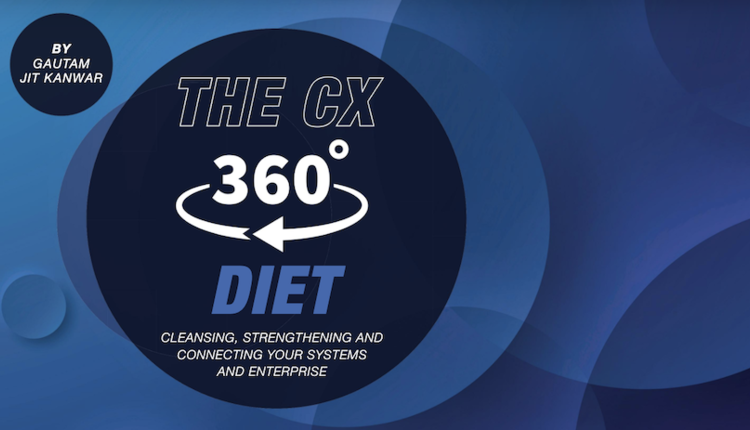
CCM has come a long way since its early days when the industry was exclusively focused on document composition and print communications. Fast forward 30 years and the industry looks very different. From the standalone systems and disconnected data silos of its origins, the industry has evolved along with CCM technology to provide customers with an omnichannel experience and businesses with beginning-to-end insight into the customer journey. Customer experience has played an integral role in shaping CCM technology and the expectations enterprise businesses have about their CCM solutions. However, that wasn’t always the case. During the 1990s, print communications were the only game in town and customers had minimal interaction with the businesses that generated their billing and other correspondence.
Things began to change in the 2000s with the emergence of interactive websites where customers could register for online accounts. Moreover, the availability of affordable personal computers allowed people to access their communications anytime and anywhere. In the 2010s, the emergence of e-commerce gave customers new ways to interact with company websites to make purchases or obtain support. As interactivity increased, customers expected more from the businesses they patronized and the communications they received. The technological revolution continued through the 2010s as businesses invested in digital communications and multichannel delivery. By 2020, businesses were leveraging creative advertising that emphasized customer empowerment through a mobile-first strategy. As enterprises recognized the growth opportunities associated with branded communications, CCM was no longer regarded as a cost center, but rather as a revenue center with marketing taking center stage.
CCM Continues to Transform
Today, CCM is going through another transformation as businesses look to eliminate siloed departments in a data-driven economy. The standalone systems of a bygone era have been replaced by CCM platforms that can pull data from multiple sources and house information in a centralized system. Today’s CCM platforms function as an integral part of diverse IT ecosystems that disseminate communications through multiple channels.
As CCM solutions continue to evolve, they will need to meet ever-changing customer expectations. Doing so means continuing to provide the services customers have come to expect while adding new features that enhance convenience, ease of use and satisfaction at each touchpoint on the customer journey. Delivering on customer expectations also means giving them what they want under one roof, rather than forcing them to go to one channel to download forms and other channels to obtain additional services.
To provide the seamless experience customers want, CCM platforms will need to sit on top of core systems developed for various industries, pulling and collating data using a centralized communication tool. Rather than making improvements as a byproduct of core systems, modern platforms will need to be agile enough to customize and develop solutions that solve new challenges. Throughout the development process, customer experience will be the centrifugal force that drives the next technological evolution for CCM.
Data Becomes the Driver
With customer experience at the forefront of CCM, businesses can now access valuable information to drive decision-making. Every data point in a customer’s history, from their online transactions to conversations with call center representatives, will be at the ready to inform critical marketing decisions like what mailers to send out or what colors to use in building the company brand. In turn, a deeper understanding of customer expectations will help companies retain existing business and create new opportunities.
Like development decisions, buyer options are dependent on end-user requirements. In today’s hyperconnected world, technology cannot be batch-based; it must be event-based. Enterprise buyers want solutions that can solve their pain points by connecting to centralized databases and linking compliance and other departments while controlling who does what during document design, composition and approval. To accomplish these lofty ambitions, CCM platforms must become interoperable with quick interactivity that allows businesses to respond in real time to customer needs and desires.
The Customer Shapes the Platform
With increased focus on the customer experience, the analysis of customer behavior has become table stakes for enterprise businesses. Buyers in this new era of CCM must be forward-looking and focused on platform solutions, rather than standalone software. Developers of modern platforms will need to identify their target audience and divide this demographic across various market segments to meet buyer requirements and give them new channels, new communication methods and new ways of telling people how these enterprises care for their end customers.
Innovations in CCM have come a long way from the print-centric standalone systems of the 1990s. Today, increased customer demand has shifted the industry toward digital communication solutions and away from an exclusive focus on print. As CCM platforms integrate with core systems for the industries they serve, it is the customer experience that will continue to shape CCM technology and drive buyer expectations. Through integration with various IT ecosystems, an evolved CCM platform can help businesses solve the challenges of a data-driven economy while providing a seamless experience at every step of the customer journey.
Gautam Jit Kanwar is President of BelWo Inc., a global provider of managed services specializing in customer communications management (CCM) consulting and delivery solutions that help companies meet strategic CCM goals.




















